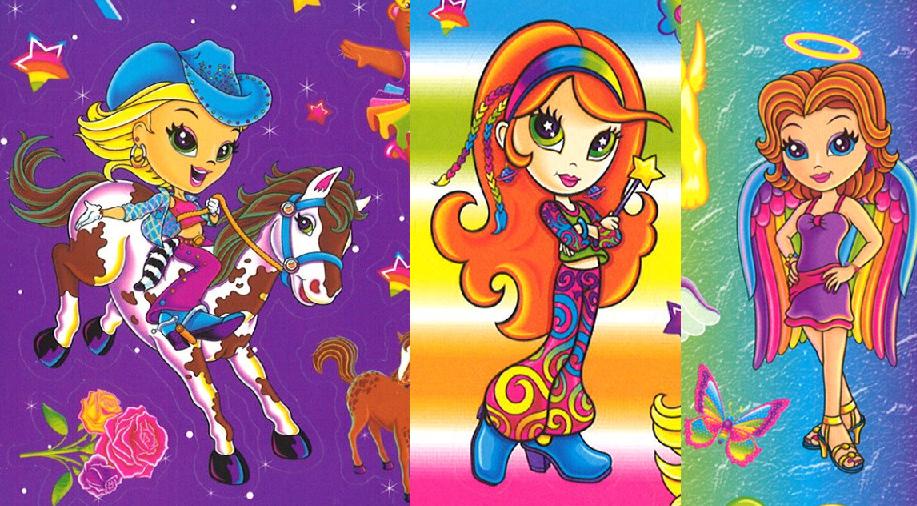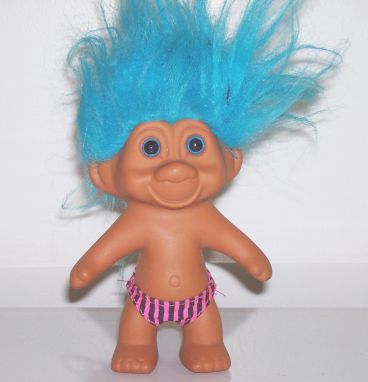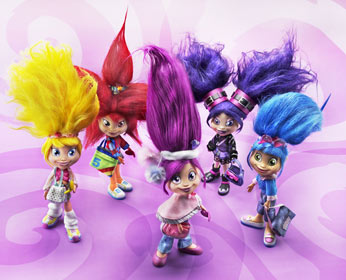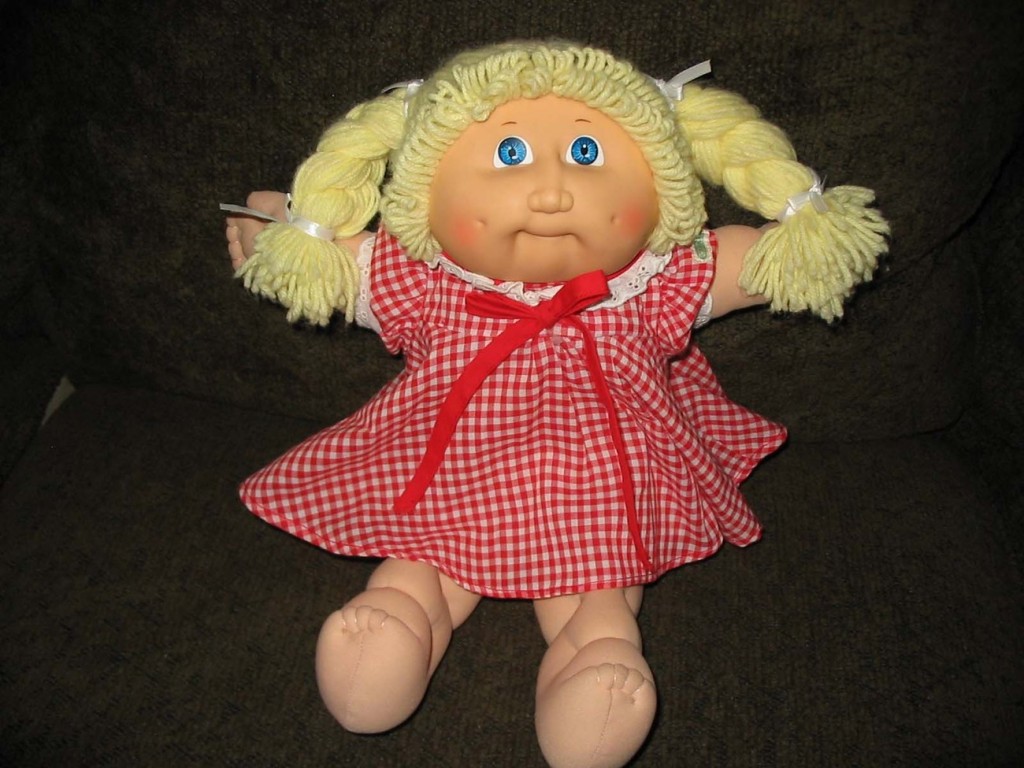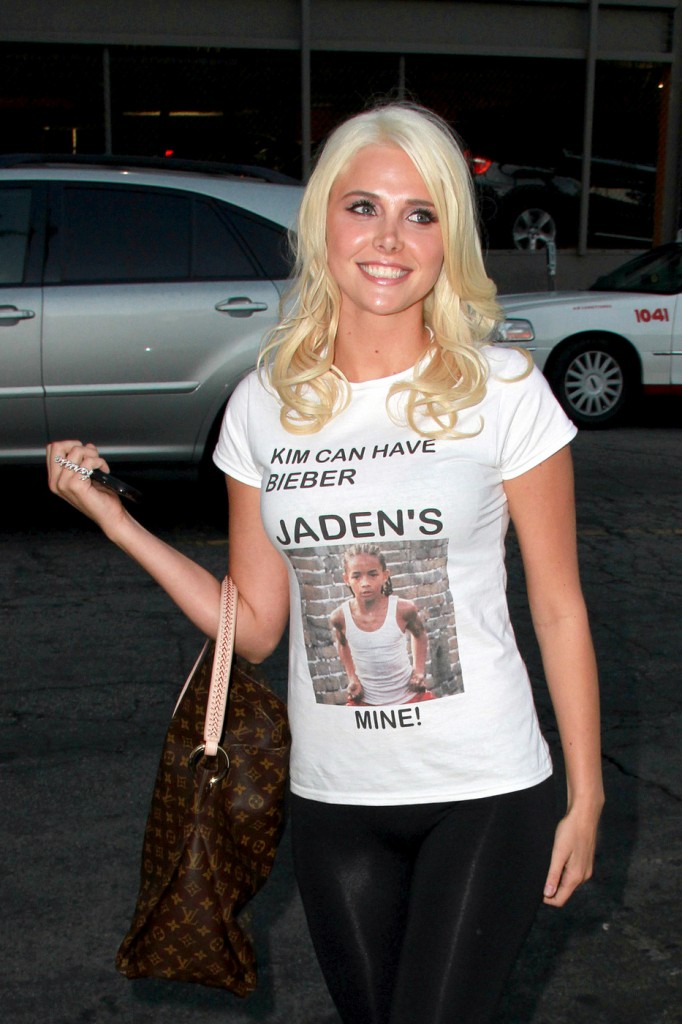Zoë sent us this video in which Erin Gibson satirizes the “sexy ____” costume trend for women so common this time of year:
gender: objectification
Cross-posted at Jezebel.
Tila Tequila has become famous through the strategic display of her culturally-idealized face and body. A quick Google image search reveals as much:
Her success and celebrity suggests that Tequila has managed to negotiate with sexism such that she, by capitulating to the male gaze, wins. But the idea that it is ever possible to successfully maneuver around patriarchy is challenged by Tequila’s most recent court battle. Nearly seven years ago she and her then-boyfriend filmed themselves having sex. Her ex is now threatening to release this sex tape against Tequila’s will. Tequila went to court to get an injunction against the tape’s release, but the judge denied her request, arguing that “Tila exploits her sexuality” anyway.
Tequila’s exploitation of her own sexuality (or, more accurately, her sex appeal), apparently, gives everyone else the right to exploit her sexuality, too. This is what it means to live in a society in which women are second-class citizens, specifically, the “sex class.” Women’s bodies are public property. Women are supposed to display them in public for men’s pleasure. If they do not, they lose: they are dykes, bitches, and ugly, fat, feminazi cunts. If they do, they lose.
Thanks to Stephanie Hallett at Ms. magazine for the tip.
Lisa Wade, PhD is an Associate Professor at Tulane University. She is the author of American Hookup, a book about college sexual culture; a textbook about gender; and a forthcoming introductory text: Terrible Magnificent Sociology. You can follow her on Twitter and Instagram.
Today is the last day of Oktoberfest in Munich; this has meant a lot of slide shows of people drinking from giant beers steins on the wiesn. I noticed that the slide show at Boston.com included a disproportionate number of images of young women in (often boob-poppin’) Dirndls. Men were about as likely to be young as they were to be older, exhibiting interesting character, and more likely to be shown in functional roles. Women, then, were included primarily as eye candy for a (presumably heterosexual and) male gaze.
Five photos of young girls in Dirndls, two photos of young men in Lederhosen, two photos of older men in Lederhosen, one mixed-sex picture of middle- and older-life characters (the only one that includes a picture of a woman who might be over 25), three photos of men at work, and two photos of women at work (including the only photo of a woman who is not dressed up to be conventionally attractive).
For a slide show without the objectification, see Time.
—————————
UPDATE! Alan Taylor, the editor of the slide show at Boston.com, wrote in with some perspective:
Hi there, just a note from the editor of the blog post in question. First, I’m happy to see the discussion here, believe it or not subjects like this are often in mind when compiling my photo stories.
This seems like fair criticism, and I’m not being defensive. What I will offer is last year’s entry for comparison and contrast: http://www.boston.com/bigpicture/2009/09/oktoberfest_2009.html – not nearly as many “boob-poppin’” dirndls there.
As an editor I am limited by the photos available to me, and their quality. In this case, for example, there may have been a decent photograph of an older woman in a strong functional role, but maybe it was poorly lit or repetitive just not up to par, and was left out. I compile entries three times a week on varied subjects that endup being 30 to 40 photos total, starting with anywhere from 100 to 300 to begin with. The selection process is long, subjective, and can certainly be viewed as flawed from many points of view.
If you think the blog is intentionally objectifying, I invite you to look through my archives: http://www.boston.com/bigpicture/2010/09/ and judge for yourself. I can also be reached by email at ataylor@boston.com
Thanks for the discussion,
-Alan Taylor
Lisa Wade, PhD is an Associate Professor at Tulane University. She is the author of American Hookup, a book about college sexual culture; a textbook about gender; and a forthcoming introductory text: Terrible Magnificent Sociology. You can follow her on Twitter and Instagram.
Previously we’ve posted on the sexy makeovers recently given to Dora the Explorer, Strawberry Shortcake, Holly Hobby, and the Sun Maid. Here we have three more.
Lisa Frank
Andy Wright at the SF Weekly recently posted about a new look for Lisa Frank art. If you’re a woman in your 30s, like me, you probably remember this art vividly. As Wright describes it, it “…was a branded line of school supplies consisting of Trapper Keepers and folders that looked like they were designed by a six-year-old girl on acid.”
When I was a kid, Lisa Frank didn’t include any people. But today it appears that they’ve added, well this:
Wright: “I have to wonder if little girls actually are more interested in bizarrely proportioned nymphets dressed like sexy hippies than a righteous day-glo tiger cub.”
Trolls, now Trollz
Remember Trolls? Growing up, I remember them looking something like this (source):
But apparently now they look like this (source):
Cabbage Patch Kids
This is a vintage Cabbage Patch Kid from 1983 (source):
This is the front page of the website today:
They still make “Classic” Cabbage Patch Kids, but now they also make “Pop ‘N Style”:
Lisa Wade, PhD is an Associate Professor at Tulane University. She is the author of American Hookup, a book about college sexual culture; a textbook about gender; and a forthcoming introductory text: Terrible Magnificent Sociology. You can follow her on Twitter and Instagram.
I’ve written previously about the portrayal of women in the military — in particular, the U.S. Navy’s attempts to redefine femininity to make the Navy more appealing to women by assuring them they can be strong, smart, and still go shopping and stuff. In another example, a number of former female Israeli Defense Force soldiers posed for Maxim magazine back in 2007. The first line of the article:
They’re drop-dead gorgeous and can take apart an Uzi in seconds. Are the women of the Israeli Defense Forces the world’s sexiest soldiers?
I’m putting the images after the jump because they’re potentially not safe for some workplaces — the women aren’t nude, but they are quite scantily clad.

Last week I linked to the first episode of the 1972 BBC documentary, Ways of Seeing (thanks again to Christina W.). The second episode, partially embedded below offers an art historian’s perspective on the objectification of women in European art and advertising, starting with paintings of nude women. “To be naked,” he argues, “is to be oneself. To be nude is to be seen naked by others and yet not recognized for oneself. A nude has to be seen as an object in order to be a nude… they are there to feed an appetite, not to have any of their own.”
And there’s a very provocative statement about hair and hairlessness (down there) in the midst.
Parts One and Two of Four:
Lisa Wade, PhD is an Associate Professor at Tulane University. She is the author of American Hookup, a book about college sexual culture; a textbook about gender; and a forthcoming introductory text: Terrible Magnificent Sociology. You can follow her on Twitter and Instagram.
Anna M., Naomi B., Amanda C., Ben Z., and SpeZek sent in a new PETA ad campaign, the latest in a twisted story of objectification metaphor.
Feminists in the ’70s protested the objectification of women by metaphorically linking meat and female bodies (e.g., “we should not be treating women like pieces of meat”). Meat is meat, so the argument went, but women are human beings and should be treated as such.
In mocking response, in 1978 Larry Flynt put a woman being chewed up by a meat grinder on the cover of Hustler magazine. We will treat women like meat if we want, was the message. And we did, and we do, seemingly endlessly.
Forty years later, Pamela Anderson submits to being symbolically carved up for butchering by PETA in order to metaphorically link meat and female bodies again. But this time, in an ironic reversal, it’s designed to condemn the way we treat animals, not the way we treat women.
And, forty years later, feminists are still saying “Please, can we not do the women/meat thing?”
So Canada denies PETA a permit for the launching of this new ad campaign. An official explains: “…it goes against all principles public organizations are fighting for in the everlasting battle of equality between men and women” (source). What a nice thing to say, feminists think.
But Anderson fights feminism with feminism:
How sad that a woman would be banned from using her own body in a political protest over the suffering of cows and chickens… In some parts of the world, women are forced to cover their whole bodies with burqas—is that next?
Yes, Pamela, I’m sure that’s next.
But I digress.
So PETA and Anderson must think that Canadians super-super-respect women like totally and never-never-objectify them to the degree that saying that animals are like women will suddenly inspire horror at the prospect of using animals for food? Or is it that they think men will see the image and be like “oooh I’d really like to rub up against that rump” and then suddenly find cows too sexy to eat? Or they don’t give a shit about women and are willing to use whatever attention-getting tactic they can to save animals from going under the knife (including using the body of a woman that has, um, gone under the knife)?
I submit this for discussion because I just don’t know.
More from PETA: women packaged like meat, and in cages, women who love animals get naked (men wear clothes), the banned superbowl ad, and a collection of various PETA advertising using (mostly women’s) nudity. See also my post on leftist balkanization, or the way that leftist social movements tend to undermine each other.
If you’re interested further, you may want to read Carol Adams’ The Sexual Politics of Meat and The Pornography of Meat.
Lisa Wade, PhD is an Associate Professor at Tulane University. She is the author of American Hookup, a book about college sexual culture; a textbook about gender; and a forthcoming introductory text: Terrible Magnificent Sociology. You can follow her on Twitter and Instagram.
Last week I posted photos of the Justin Bieber/Kim Kardashian photoshoot for Elle. I compared it to my earlier post on the sexualization of Jaden Smith. In both I argued that we accept the sexualization of boys at younger ages than girls, seeing it as adorable and proof that they are sufficiently heterosexual and masculine rather than that they are in danger of sexual exploitation.
Yesterday Rob W. sent in a photo that I think illustrates this point well:
Who is the adult woman wearing this shirt? That’s Karissa Shannon, who is dating Hugh Hefner.
Imagine, if you can, if this were an adult man associated in some way with a famous producer of pornography widely known for dating groups of much younger women, and that adult man’s shirt had this same message but about two teen/pre-teen girls (or, for that matter, imagine a famous gay man wearing this exact shirt). And then imagine the concern and horror that would ensue, the apologies through the man’s agent, and so on.
A short google search did turn up a post (re-posted in several other places) calling the shirt inappropriate, but given that Shannon is referred to as “sloppy seconds” in it, I’m not sure how to take it (since “sloppy seconds” reaffirms a sexual double-standard itself). A lot of other sites, on the other hand, found it adorable and/or funny, and asked readers to weigh in on Team Justin vs. Team Jaden.
Cross-posted at Jezebel.
Tila Tequila has become famous through the strategic display of her culturally-idealized face and body. A quick Google image search reveals as much:
Her success and celebrity suggests that Tequila has managed to negotiate with sexism such that she, by capitulating to the male gaze, wins. But the idea that it is ever possible to successfully maneuver around patriarchy is challenged by Tequila’s most recent court battle. Nearly seven years ago she and her then-boyfriend filmed themselves having sex. Her ex is now threatening to release this sex tape against Tequila’s will. Tequila went to court to get an injunction against the tape’s release, but the judge denied her request, arguing that “Tila exploits her sexuality” anyway.
Tequila’s exploitation of her own sexuality (or, more accurately, her sex appeal), apparently, gives everyone else the right to exploit her sexuality, too. This is what it means to live in a society in which women are second-class citizens, specifically, the “sex class.” Women’s bodies are public property. Women are supposed to display them in public for men’s pleasure. If they do not, they lose: they are dykes, bitches, and ugly, fat, feminazi cunts. If they do, they lose.
Thanks to Stephanie Hallett at Ms. magazine for the tip.
Lisa Wade, PhD is an Associate Professor at Tulane University. She is the author of American Hookup, a book about college sexual culture; a textbook about gender; and a forthcoming introductory text: Terrible Magnificent Sociology. You can follow her on Twitter and Instagram.
Today is the last day of Oktoberfest in Munich; this has meant a lot of slide shows of people drinking from giant beers steins on the wiesn. I noticed that the slide show at Boston.com included a disproportionate number of images of young women in (often boob-poppin’) Dirndls. Men were about as likely to be young as they were to be older, exhibiting interesting character, and more likely to be shown in functional roles. Women, then, were included primarily as eye candy for a (presumably heterosexual and) male gaze.
Five photos of young girls in Dirndls, two photos of young men in Lederhosen, two photos of older men in Lederhosen, one mixed-sex picture of middle- and older-life characters (the only one that includes a picture of a woman who might be over 25), three photos of men at work, and two photos of women at work (including the only photo of a woman who is not dressed up to be conventionally attractive).
For a slide show without the objectification, see Time.
—————————
UPDATE! Alan Taylor, the editor of the slide show at Boston.com, wrote in with some perspective:
Hi there, just a note from the editor of the blog post in question. First, I’m happy to see the discussion here, believe it or not subjects like this are often in mind when compiling my photo stories.
This seems like fair criticism, and I’m not being defensive. What I will offer is last year’s entry for comparison and contrast: http://www.boston.com/bigpicture/2009/09/oktoberfest_2009.html – not nearly as many “boob-poppin’” dirndls there.
As an editor I am limited by the photos available to me, and their quality. In this case, for example, there may have been a decent photograph of an older woman in a strong functional role, but maybe it was poorly lit or repetitive just not up to par, and was left out. I compile entries three times a week on varied subjects that endup being 30 to 40 photos total, starting with anywhere from 100 to 300 to begin with. The selection process is long, subjective, and can certainly be viewed as flawed from many points of view.
If you think the blog is intentionally objectifying, I invite you to look through my archives: http://www.boston.com/bigpicture/2010/09/ and judge for yourself. I can also be reached by email at ataylor@boston.com
Thanks for the discussion,
-Alan Taylor
Lisa Wade, PhD is an Associate Professor at Tulane University. She is the author of American Hookup, a book about college sexual culture; a textbook about gender; and a forthcoming introductory text: Terrible Magnificent Sociology. You can follow her on Twitter and Instagram.
Previously we’ve posted on the sexy makeovers recently given to Dora the Explorer, Strawberry Shortcake, Holly Hobby, and the Sun Maid. Here we have three more.
Lisa Frank
Andy Wright at the SF Weekly recently posted about a new look for Lisa Frank art. If you’re a woman in your 30s, like me, you probably remember this art vividly. As Wright describes it, it “…was a branded line of school supplies consisting of Trapper Keepers and folders that looked like they were designed by a six-year-old girl on acid.”
When I was a kid, Lisa Frank didn’t include any people. But today it appears that they’ve added, well this:
Wright: “I have to wonder if little girls actually are more interested in bizarrely proportioned nymphets dressed like sexy hippies than a righteous day-glo tiger cub.”
Trolls, now Trollz
Remember Trolls? Growing up, I remember them looking something like this (source):
But apparently now they look like this (source):
Cabbage Patch Kids
This is a vintage Cabbage Patch Kid from 1983 (source):
This is the front page of the website today:
They still make “Classic” Cabbage Patch Kids, but now they also make “Pop ‘N Style”:
Lisa Wade, PhD is an Associate Professor at Tulane University. She is the author of American Hookup, a book about college sexual culture; a textbook about gender; and a forthcoming introductory text: Terrible Magnificent Sociology. You can follow her on Twitter and Instagram.
I’ve written previously about the portrayal of women in the military — in particular, the U.S. Navy’s attempts to redefine femininity to make the Navy more appealing to women by assuring them they can be strong, smart, and still go shopping and stuff. In another example, a number of former female Israeli Defense Force soldiers posed for Maxim magazine back in 2007. The first line of the article:
They’re drop-dead gorgeous and can take apart an Uzi in seconds. Are the women of the Israeli Defense Forces the world’s sexiest soldiers?
I’m putting the images after the jump because they’re potentially not safe for some workplaces — the women aren’t nude, but they are quite scantily clad.

Last week I linked to the first episode of the 1972 BBC documentary, Ways of Seeing (thanks again to Christina W.). The second episode, partially embedded below offers an art historian’s perspective on the objectification of women in European art and advertising, starting with paintings of nude women. “To be naked,” he argues, “is to be oneself. To be nude is to be seen naked by others and yet not recognized for oneself. A nude has to be seen as an object in order to be a nude… they are there to feed an appetite, not to have any of their own.”
And there’s a very provocative statement about hair and hairlessness (down there) in the midst.
Parts One and Two of Four:
Lisa Wade, PhD is an Associate Professor at Tulane University. She is the author of American Hookup, a book about college sexual culture; a textbook about gender; and a forthcoming introductory text: Terrible Magnificent Sociology. You can follow her on Twitter and Instagram.
Anna M., Naomi B., Amanda C., Ben Z., and SpeZek sent in a new PETA ad campaign, the latest in a twisted story of objectification metaphor.
Feminists in the ’70s protested the objectification of women by metaphorically linking meat and female bodies (e.g., “we should not be treating women like pieces of meat”). Meat is meat, so the argument went, but women are human beings and should be treated as such.
In mocking response, in 1978 Larry Flynt put a woman being chewed up by a meat grinder on the cover of Hustler magazine. We will treat women like meat if we want, was the message. And we did, and we do, seemingly endlessly.
Forty years later, Pamela Anderson submits to being symbolically carved up for butchering by PETA in order to metaphorically link meat and female bodies again. But this time, in an ironic reversal, it’s designed to condemn the way we treat animals, not the way we treat women.
And, forty years later, feminists are still saying “Please, can we not do the women/meat thing?”
So Canada denies PETA a permit for the launching of this new ad campaign. An official explains: “…it goes against all principles public organizations are fighting for in the everlasting battle of equality between men and women” (source). What a nice thing to say, feminists think.
But Anderson fights feminism with feminism:
How sad that a woman would be banned from using her own body in a political protest over the suffering of cows and chickens… In some parts of the world, women are forced to cover their whole bodies with burqas—is that next?
Yes, Pamela, I’m sure that’s next.
But I digress.
So PETA and Anderson must think that Canadians super-super-respect women like totally and never-never-objectify them to the degree that saying that animals are like women will suddenly inspire horror at the prospect of using animals for food? Or is it that they think men will see the image and be like “oooh I’d really like to rub up against that rump” and then suddenly find cows too sexy to eat? Or they don’t give a shit about women and are willing to use whatever attention-getting tactic they can to save animals from going under the knife (including using the body of a woman that has, um, gone under the knife)?
I submit this for discussion because I just don’t know.
More from PETA: women packaged like meat, and in cages, women who love animals get naked (men wear clothes), the banned superbowl ad, and a collection of various PETA advertising using (mostly women’s) nudity. See also my post on leftist balkanization, or the way that leftist social movements tend to undermine each other.
If you’re interested further, you may want to read Carol Adams’ The Sexual Politics of Meat and The Pornography of Meat.
Lisa Wade, PhD is an Associate Professor at Tulane University. She is the author of American Hookup, a book about college sexual culture; a textbook about gender; and a forthcoming introductory text: Terrible Magnificent Sociology. You can follow her on Twitter and Instagram.
Last week I posted photos of the Justin Bieber/Kim Kardashian photoshoot for Elle. I compared it to my earlier post on the sexualization of Jaden Smith. In both I argued that we accept the sexualization of boys at younger ages than girls, seeing it as adorable and proof that they are sufficiently heterosexual and masculine rather than that they are in danger of sexual exploitation.
Yesterday Rob W. sent in a photo that I think illustrates this point well:
Who is the adult woman wearing this shirt? That’s Karissa Shannon, who is dating Hugh Hefner.
Imagine, if you can, if this were an adult man associated in some way with a famous producer of pornography widely known for dating groups of much younger women, and that adult man’s shirt had this same message but about two teen/pre-teen girls (or, for that matter, imagine a famous gay man wearing this exact shirt). And then imagine the concern and horror that would ensue, the apologies through the man’s agent, and so on.
A short google search did turn up a post (re-posted in several other places) calling the shirt inappropriate, but given that Shannon is referred to as “sloppy seconds” in it, I’m not sure how to take it (since “sloppy seconds” reaffirms a sexual double-standard itself). A lot of other sites, on the other hand, found it adorable and/or funny, and asked readers to weigh in on Team Justin vs. Team Jaden.



